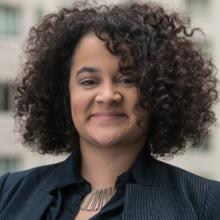Raquel Cepeda describes “an infectious new force” that began taking root in the United States during the early 1970s. She writes in And It Don’t Stop: The Best American Hip-Hop Journalism of the Last 25 Years that this force “spawned from New York City’s concrete jungles in the 1970s to become the ultimate expression of black youth resistance to poverty and oppression.” This was hip-hop. And it was here to stay.
Hip-hop was born in the Bronx, at 1520 Sedgwick Avenue, to be exact. And its infancy is the focus of the new Netflix series, “The Get Down.” Created by Baz Luhrmann (director of “Romeo + Juliet,” “Moulin Rouge!”) and Stephen Aldy Guirgis (playwright of the Pulitzer-winning “Between Riverside and Crazy”), the 12-episode series premiered its first six episodes in August; the remaining six are to be released next year.
Set in the South Bronx during the 1970s, “The Get Down” is a hip-hop coming of age story. The protagonist is Ezekiel “Zeke”Figuero (Justice Smith), who lost both of his parents to gun violence. In one of the series’s best scenes, Zeke describes the death of his mom. “All the news that fits the print. Mama’s death went unreported. Not a whiff, word or hint. ‘They don’t care about us n****s’ is how my pops explained it. But I didn’t know I was a n***a until my dad proclaimed it.” Zeke is in love with Mylene Cruz (Herizen F. Guardiola), a church singer who dreams of being a disco star. Mylene lives with her religious parents, who throughout much of the series are opposed to her dreams. She reciprocates Zeke’s feelings, but her dreams to leave the Bronx often outshine them. It is thanks to her uncle, Francisco “Papa Fuerte” Cruz (Jimmy Smits), that she gets to follow her dream of producing a record.
We watch as Zeke balances his relationship with Mylene and his role as a “wordsmith” or emcee for the Get Down boys with Shaolin Fantastic (Shameik Moore), a young teen who dreams of being the next Grandmaster Flash, and the Kipling brothers, Ra-Ra (Skylan
Brooks), Boo Boo (T. J. Browne Jr.) and Dizzee (Jaden Smith). Relationships are formed; dreams are pursued. And all of this happens with the Bronx burning around them.
Throughout the series, the teenagers’ lives are accompanied by the sounds of artists like Earth, Wind & Fire, Donna Summer, Vickie Sue Robinson, Willie Colón, Nina Simone and many others. Luhrmann and Guirgis include Grandmaster Flash and DJ Kool Herc, two of hip-hop’s earliest pioneers, as characters. In 1982, Steven Hager wrote in The Village Voice that in “1977, a young DJ in the South Bronx named Grandmaster Flash began revolutionizing rap music.” Audiences first see Flash’s skills in another great scene, in which Shaolin takes the Get Down boys to a party where Flash is deejaying. In what appears to be the alley of a burned down building, we see blacks and Latinos dancing to The Sugarhill Gang’s “Apache.” We watch as Flash mixes the track: what Hager describes as “a variety of weird effects using the scratching technique” on records—or what Shaolin calls “the get down.” Along with the executive producer Nasir Jones, Flash was also an advisor during the filming of the series, helping to educate the young actors on hip-hop’s origins.
While much of “The Get Down” shines, the narrative often feels overwhelming, slightly over the top and very much like a Luhrmann film—think his “Gatsby” meets the burning Bronx. And the switch between actual footage of the Bronx in the 1970s and the acting at times feels jarring for the viewer. The pace, thankfully, becomes more focused, particularly in the last few episodes; and over all, “The Get Down” does deserve praise.
Its focus on the Bronx and characters of color is superb. Very few shows outside of the Shonda Rhimes sphere display this kind of diversity. For the first time ever, audiences get a show about the Bronx and hip-hop starring black and Latino actors. Second, the casting of the series is well done and the actors are truly fun to watch. (My personal favorite is Yahya Abdul-Mateen II’s character, Clarence “Cadillac” Caldwell.) The young actors also deliver a variety of great one-liners, like Shaolin’s “This ain’t Disneyland. This is the f*****g Bronx. Either you be strong, or you be gone.”
It is refreshing to see these faces and themes on screen. And if you’ve ever wondered about the origins of hip-hop and the Bronx, “The Get Down” is a great starting point.








